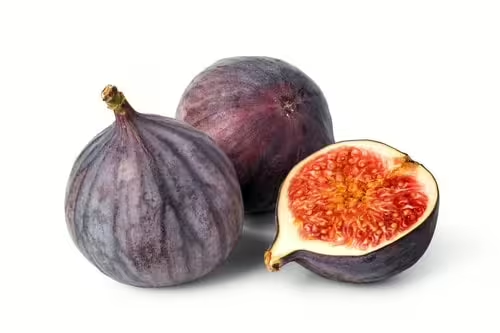The fig is a fleshy and juicy fruit, of purple, green or brown in color, depending on the varieties. It grows on a tree called fig tree, which is from Asia and North Africa. The fig is very appreciated for its sweet and fragrant taste, which recalls that of banana and strawberry. The fig is very nutritious and is rich in dietary fiber, vitamins and minerals, including vitamin K and potassium. It also contains antioxidants, which help protect cells from damage caused by free radicals. Fig is also a source of natural sugars, which provide energy and help maintain a stable blood sugar level.
